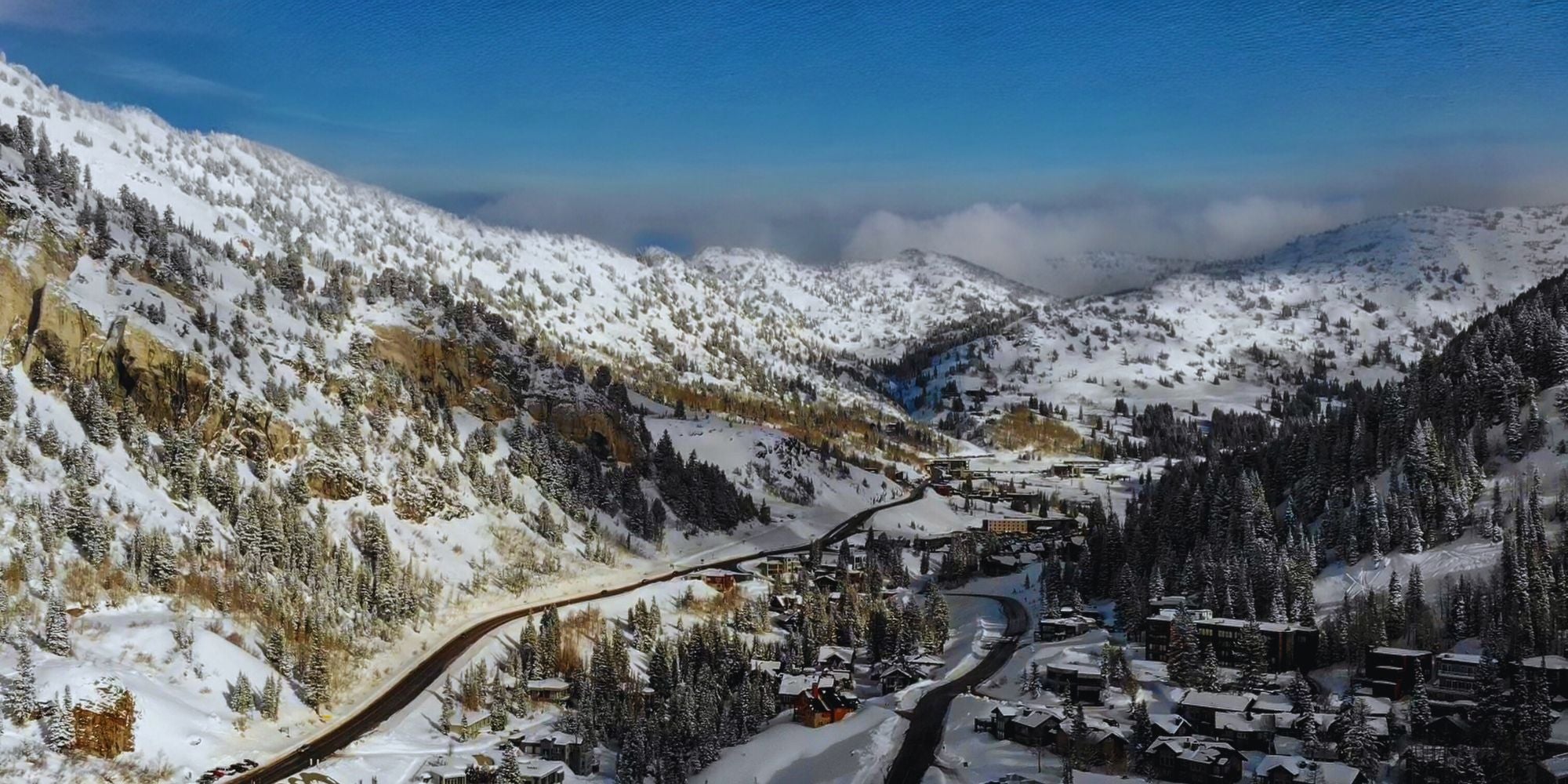
Snowbird, Utah, is a popular ski resort with high altitude that put visitors at risk of altitude sickness. In this guide, we'll review everything you need to know about Snowbird altitude sickness and our top five tips to avoid altitude sickness.
Snowbird altitude sits at a base of 7,760 feet above sea level. The summit climbs to heights to 11,000 feet.
Snowbird Ski Resort is located in Little Cottonwood Canyon in the Wasatch Range of the Rocky Mountains in Utah. It's a popular ski destination known for its abundant snowfall and challenging terrain. The resort covers 2,500 acres and has a vertical drop of 3,240 feet. It offers a variety of activities both winter and summer for skiers, snowboarders, snowshoeing, cross-country skiing, snowmobiling, mountain biking, and hiking.
Snowbird ski resort has a variety of altitudes depending on where you are or if you're skiing:
Snowbird Ski Resort is located only around 30 miles from Salt Lake City and the Salt Lake City International Airport, making it easily accessible for visitors from around the world.
With these high altitudes of Snowbird ski resort, you'll want to be well prepared.
Salt Lake City is a popular destination for skiing and snowboarding, thanks to its proximity to several world-class ski resorts. Although Snowbird is ranked the second best resort in North America at 8,100 feet above sea level, there many other world-class resorts nearby.
Here are the top ski resorts near Snowbird in Utah and their altitudes accordingly:
These are just the many popular ski resorts near Snowbird and Salt Lake City that offer a wide range of skiing and snowboarding experiences. Overall, Snowbird comes in as the third highest ski resort when looking at the base elevation.
Yes, you can get altitude sickness in Snowbird.
Snowbird Ski Resort elevation is 8,100 feet on average at its base. Although people report altitude sickness in elevations as low as Salt Lake City (4,265 ft), elevations above 8,000 feet have significantly higher risk.
In fact at over 10000 feet in which Snowbird's summit exceeds (11,000 ft), altitude sickness can be shown in as much as 50% of people.⁹
Snowbird altitude sickness, or acute mountain sickness, is caused by lower oxygen conditions. The oxygen levels in Snowbird are only around 15%.⁹
This can cause oxidative and physiological stress on the body and lead to symptoms such as headaches, fatigue and even insomnia.
Symptoms of Snowbird altitude sickness may include:
Keep an eye out for these type of symptoms when you arrive at Snowbird, which usually develop within 6-24 hours. Read further to learn about our best tips to avoid altitude sickness on your Snowbird trip.
If you're planning a trip to Snowbird Ski Resort or Utah's many other high-altitude ski destinations, it's crucial to be prepared for the risk of altitude sickness so it doesn't put a damper on your vacation.
As a company based in Colorado, loaded with high altitude ski resorts like Utah, we'll share with you our best tips based on over a decade of experience.
Here's Our Top 5 Tips To Avoid Snowbird Altitude Sickness:
In summary, follow these top five tips to avoid Snowbird altitude sickness and maximize your experience — including acclimating slowly, staying hydrated, limiting alcohol, prioritizing sleep, and taking glutathione.

Introducing Zaca - the ultimate travel companion! Whether you're climbing mountains or flying high, this chewable allows you to feel refreshed and ready to explore. Made with a unique blend of natural herbs and antioxidants including glutathione, the formula is designed to replenish your body with essential nutrients, support hydration, and help recovery. Plus, the chewables are in portable packets o they're compact and easy to carry, making them the perfect travel companion. Simply take 2-4 chewables each travel day or as you prefer. Don't let travel slow you down, try Zaca's chewable supplement today.
SOURCES:
1. Snowbird Elevation
https://en.wikipedia.org/wiki/Snowbird,_Utah
2. Salt Lake City Utah Elevation
https://en.wikipedia.org/wiki/Salt_Lake_City
3. Brighton Ski Resort Elevation
https://en.wikipedia.org/wiki/Brighton_Ski_Resort
4. Solitude Mountain Resort Elevation
https://en.wikipedia.org/wiki/Solitude_Mountain_Resort
5. Sundance Resort Elevation
https://en.wikipedia.org/wiki/Sundance_Resort
6. Powder Mountain Elevation
https://en.wikipedia.org/wiki/Powder_Mountain
7. Snowbasin Elevation
https://en.wikipedia.org/wiki/Snowbasin
8. High-altitude illness (including mountain sickness)
https://www.uptodate.com/contents/high-altitude-illness-including-mountain-sickness-beyond-the-basics
9. Oxygen Levels at Altitude
https://wildsafe.org/resources/ask-the-experts/altitude-safety-101/oxygen-levels/
10. Why Do You Need to Drink a Lot of Water at a High Altitude?
https://www.livestrong.com/article/360485-how-to-train-for-high-altitude-hiking
11. Effects of Alcohol
https://www.ahajournals.org/doi/full/10.1161/01.HYP.29.6.1278#
12. Sleep: The Secret Ingredient of Injury Recovery
https://www.orthocarolina.com/media/sleep-the-secret-ingredient-of-injury-recovery
13. High altitude and oxidative stress
https://pubmed.ncbi.nlm.nih.gov/17482529/
14. Oxidative Stress and Diseases Associated with High-Altitude Exposure
https://www.ncbi.nlm.nih.gov/pmc/articles/PMC8868315/
15. Effect of high altitude (7,620 m) exposure on glutathione
https://pubmed.ncbi.nlm.nih.gov/11320641/
16. Snowbird - What is Snowbird's elevation?
https://www.snowbird.com/faq/
Copy the coupon code & use it at checkout